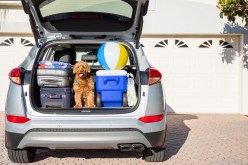How to Properly Fit a Dog Harness: A Step-by-Step Guide

When it comes to dog walking essentials, leashes and harnesses are at the top of the list. While leashes provide control and convenience, harnesses offer a more comfortable and secure option for both dogs and their owners. However, it’s crucial to ensure that your dog’s harness fits properly to maximize its benefits. In this step-by-step guide, we’ll walk you through the process of fitting a dog harness correctly.
Why Proper Fit Matters
Before we delve into the fitting process, let’s discuss why a proper fit is so essential for a dog harness. First and foremost, an ill-fitting harness can cause discomfort or even pain for your furry friend. It may rub against their skin or restrict their movement if too tight. On the other hand, if the harness is too loose, your dog might slip out of it or experience chafing.
Additionally, a properly fitted harness ensures optimal control during walks. It distributes pressure evenly across your dog’s chest and shoulders rather than focusing on their neck like traditional collars do. This is especially important for dogs with respiratory issues or delicate necks.
Measuring Your Dog
To begin the fitting process, you’ll need accurate measurements of your dog’s body. Start by measuring their chest circumference using a flexible tape measure. Wrap it around the widest part of their chest just behind their front legs while keeping it snug but not tight.
Next, measure your dog’s neck circumference from just below their ears where the collar usually sits. Again, make sure to keep the tape measure snug but not constricting.
Finally, measure the length between your dog’s chest and back (from just behind their front legs to where their tail begins). Write down these measurements as they will serve as guidelines when selecting and adjusting the size of your dog’s harness.
Selecting the Right Harness
Now that you have your dog’s measurements, it’s time to select the appropriate harness size. Different harness brands may have slightly different size charts, so refer to the specific manufacturer’s guidelines for a more accurate fit.
When choosing a harness, consider both the chest and neck measurements. Most harnesses are adjustable to some extent, but it’s important to choose a size that matches your dog’s measurements closely. Avoid selecting a harness that is too loose or too tight as this can compromise comfort and safety.
Adjusting and Fitting the Harness
Once you’ve selected the right harness size for your dog, it’s time to adjust and fit it properly. Start by unbuckling all straps on the harness and lay it flat on the ground or hold it up in front of you.
Place your dog’s front legs through the appropriate openings in the harness. The D-ring where you will attach your leash should be on their back.
Next, fasten the buckles around your dog’s chest and secure them snugly but not tightly. You should be able to fit two fingers comfortably between your dog and the straps.
Adjust any additional straps on the harness to ensure a secure fit without constriction. Make sure there is enough room for your dog to move freely but not enough for them to slip out of or escape from the harness.
Finally, double-check all adjustments by gently tugging on each strap. If everything remains secure and in place, congratulations. You’ve successfully fitted your dog with a comfortable and properly fitting harness.
Conclusion
Properly fitting a dog harness is crucial for both comfort and control during walks. By following this step-by-step guide, you can ensure that your furry friend enjoys their walks while staying safe and secure. Remember to measure accurately, select an appropriate size, and make necessary adjustments for a comfortable fit. With a well-fitted harness, you and your dog can enjoy stress-free walks together.
This text was generated using a large language model, and select text has been reviewed and moderated for purposes such as readability.





